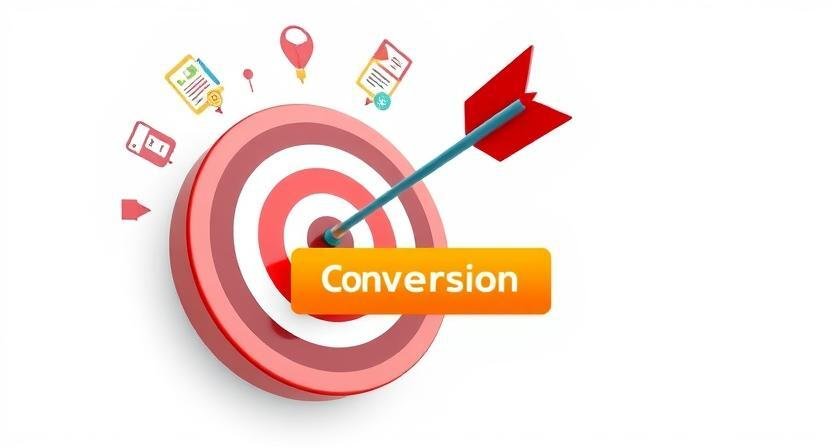Pay-per-click (PPC) advertising is one of the most powerful tools in digital marketing. It allows businesses to reach potential customers at the exact moment they’re searching for something relevant. But here’s the catch—there’s no guarantee people will click your ad just because it’s there. For your PPC ads to actually work, they need to be crafted with care. That means writing great copy, designing the ad to stand out, and adding a strong call-to-action (CTA).
In this guide, we’re going to break down what makes a perfect PPC ad by focusing on three key parts: the copy, the design, and the CTA. Whether you’re new to PPC or just want to improve your results, this article is made to be easy to understand, no fluff, no confusing jargon.
What is a PPC Ad?
Before we dig into the details, let’s quickly go over what a PPC ad actually is.
PPC stands for pay-per-click. It’s a type of online advertising where you pay every time someone clicks on your ad. These ads usually appear at the top of search results (like on Google), on social media platforms (like Facebook or Instagram), or on websites as display ads.
Unlike organic traffic, which comes naturally through search engines over time, PPC ads give you the chance to appear in front of users immediately—if you’re willing to pay for it.
Why the Anatomy of a PPC Ad Matters
A successful PPC ad is more than just placing an ad online. It’s about combining strategy, creativity, and testing. The goal is to catch someone’s attention, get them to click, and lead them to take action (like making a purchase or filling out a form).
The best PPC ads don’t just happen. They’re built—step-by-step, with care. And that’s where understanding the anatomy comes in. So let’s break it down.
1. The Copy: Say the Right Thing in the Right Way
Headlines That Hook
The headline is the first thing people will see. In a PPC ad, you usually only get 30–90 characters to grab someone’s attention. So, it’s got to be short, sharp, and straight to the point.
Here are a few things to keep in mind:
- Use your keyword: If your ad is about “running shoes,” make sure that phrase is in the headline.
- Solve a problem: Think about what the user wants. “Tired of sore feet? Try our cushioned runners.”
- Create curiosity or urgency: “50% Off Today Only” or “Limited Sizes Left.”
A great headline isn’t clever just for the sake of being clever—it’s clear. It matches what the person is searching for.
Description That Connects
Once someone reads your headline, they’ll probably skim the description. This is your chance to add context and make your offer sound irresistible.
Here’s how to write a great PPC ad description:
- Focus on benefits, not features: Don’t just say “Made with mesh.” Say “Breathable material keeps your feet cool all day.”
- Use numbers or stats: “Rated 4.9/5 by 2,000+ happy customers” sounds more credible than just saying “Popular product.”
- Include emotional triggers: People respond to feelings. Words like “easy,” “safe,” “trusted,” and “fast” can help build trust.
Match the Message to the Landing Page
One common mistake is when the PPC ad says one thing, but the landing page says another. If your ad says “Free Trial,” make sure the landing page offers that free trial. This is called message match—and it helps with trust and conversions.
2. The Design: Look Good and Get Clicked
Design plays a huge role in PPC ads, especially display ads and social media ads. But even for search ads, the structure and visual elements can impact how users perceive your brand.
For Search Ads
Even though Google search ads don’t include graphics, how they’re structured visually still matters.
- Use proper capitalization: “Buy Comfortable Running Shoes” is easier to read than “buy comfortable running shoes.”
- Add ad extensions: These are extras like phone numbers, site links, or location info. They make your ad look bigger and give people more reasons to click.
For Display and Social Ads
When it comes to visual ads, here’s what makes the design work:
- Keep it clean: Too many colors, fonts, or elements can confuse the viewer. Stick to 2–3 colors and 1–2 fonts.
- Use high-quality images: Blurry or low-res images instantly lower trust.
- Include your logo: It helps people recognize your brand and builds credibility.
- Make text readable: Use big, bold text that people can read even on mobile.
- Show people, if possible: Humans are drawn to faces. Showing someone using your product can increase engagement.
Responsive Design
More than half of all clicks come from mobile devices. So your ads (and landing pages) need to look great and load fast on smartphones and tablets.
3. The Call-to-Action (CTA): Tell Them What to Do
Even if someone loves your ad, they may not know what to do next unless you tell them. That’s where the CTA comes in.
A CTA is the final push that turns a viewer into a clicker—and ideally, a customer.
What Makes a CTA Great?
- Clarity: Be clear about what happens next. “Start Your Free Trial” is better than “Click Here.”
- Urgency: Words like “Now,” “Today,” or “Limited Time” add urgency.
- Low risk: Use phrases like “No credit card needed” or “Cancel anytime” to reduce hesitation.
- Action-focused verbs: Start with strong words like Get, Start, Try, Discover, Download, Learn, or Shop.
Where to Place Your CTA
- In the ad: Of course, the CTA should be in your ad text or on the button in visual ads.
- On the landing page: Your ad should lead to a landing page that repeats the CTA and makes it easy to take action.
Here are some good CTA examples:
- “Try Risk-Free for 30 Days”
- “Book Your Spot Today”
- “Download Your Guide Now”
- “Get Instant Access”
Bonus Tips to Improve Your PPC Ads
A/B Test Everything
Even the best PPC pros don’t guess—they test. A/B testing lets you try out different versions of your ad to see what works best. You can test:
- Headlines
- CTAs
- Images
- Offers
- Button colors
Sometimes a small change can make a big difference in clicks and conversions.
Use Negative Keywords
Don’t want your ad to show for certain searches? Add negative keywords. For example, if you’re selling luxury watches, you might want to exclude “cheap watches.”
Keep Your Audience in Mind
Speak directly to the person you’re trying to reach. If your audience is busy parents, focus on ease and time-saving. If it’s tech-savvy developers, focus on features and performance.
Putting It All Together: A Sample Ad Breakdown
Let’s look at a sample PPC ad and explain why it works.
Headline: “Comfortable Running Shoes – 25% Off This Week Only”
Description: “Feel the difference with our cushioned, breathable runners. Free shipping. 2,000+ 5-star reviews.”
CTA: “Shop Now and Save”
Why it works:
- It includes the keyword (“running shoes”).
- It creates urgency (“This Week Only”).
- It uses benefits (“cushioned, breathable”).
- It builds trust (“2,000+ 5-star reviews”).
- It gives a clear CTA (“Shop Now”).
Final Thoughts
PPC ads may look simple, but there’s a lot of thought behind every great one. From the copy to the design to the CTA, every part has a job to do. Think of them as pieces of a puzzle. When they all fit together, you get an ad that people notice, click on, and take action from.
If you’re running PPC ads right now, go back and review them with this checklist:
- Is your headline attention-grabbing?
- Does your copy speak to real benefits?
- Does your design look clean and professional?
- Is your CTA clear and compelling?
If the answer is “yes” to all of those, you’re already on your way to creating the kind of ad people love to click.




